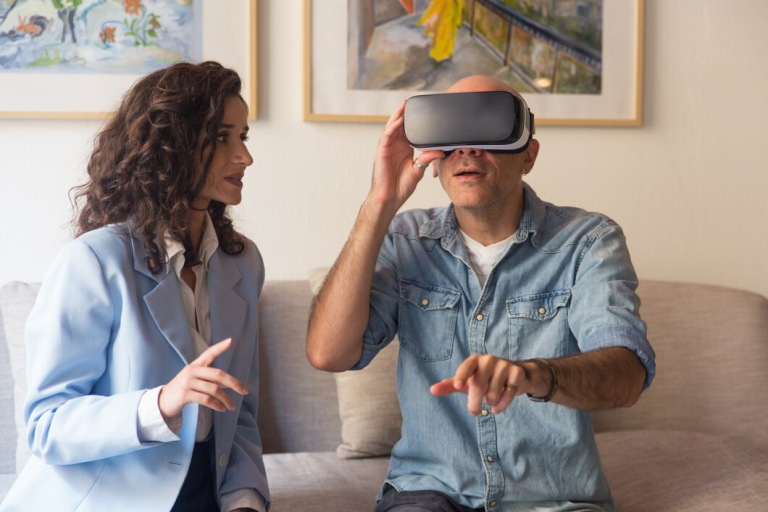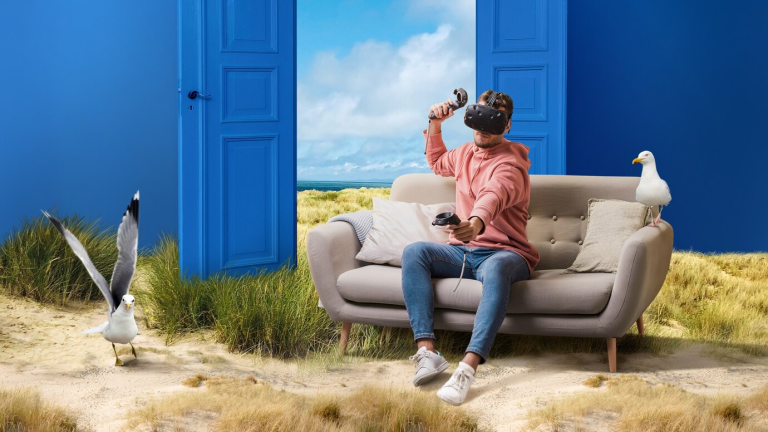Virtual Reality (VR) has become a game-changer in the field of architecture and interior design. It offers an immersive and interactive experience that allows architects, designers, and clients to visualize and explore spaces like never before. As technology continues to advance, the future of VR in architecture and interior design looks promising. In this blog post, we’ll delve into the exciting trends and developments that are shaping the future of VR in these industries.
1. Enhanced Realism with Photorealistic Rendering
One of the most prominent trends in VR for architecture and interior design is the pursuit of enhanced realism through photorealistic rendering. VR technology is increasingly capable of producing lifelike visuals, mimicking the way light interacts with materials and surfaces. This level of realism allows clients and designers to virtually step into spaces that feel almost indistinguishable from reality.
The use of advanced rendering techniques, such as ray tracing and global illumination, is making it possible to create VR environments that showcase accurate reflections, shadows, and textures. This trend is set to continue as hardware and software capabilities improve, providing a more convincing and immersive experience.
2. Social VR Collaboration
Collaboration is a crucial aspect of architecture and interior design projects. Virtual Reality is now facilitating collaboration like never before. Social VR platforms and applications allow multiple users to meet in the same virtual space, regardless of their physical locations. This enables architects, designers, and clients to work together seamlessly, share ideas, and make real-time design decisions.
Imagine architects and clients from different parts of the world exploring a virtual building together, discussing design elements, and making changes on the fly. Social VR collaboration is not only enhancing efficiency but also fostering better communication and understanding among project stakeholders.
3. VR-Based Training and Simulation
Aspiring architects and interior designers can benefit from VR-based training and simulation programs. These immersive educational tools provide hands-on experience in design principles, space planning, and architectural visualization. Students can practice their skills in a safe virtual environment before entering the real world.
Moreover, VR-based training is not limited to beginners. Experienced professionals can use VR simulations to refine their skills, experiment with new design concepts, and stay updated with the latest industry trends. This trend is likely to reshape architectural education and professional development in the coming years.
4. Integration with Augmented Reality (AR)
The convergence of Virtual Reality (VR) and Augmented Reality (AR) is another exciting trend to watch. While VR immerses users in entirely virtual environments, AR overlays digital information onto the real world. The integration of these technologies, known as Mixed Reality (MR), has the potential to revolutionize architectural and interior design processes.
Imagine wearing AR glasses that allow you to see holographic architectural models overlaid onto a construction site. This can help architects and builders visualize designs in the context of the physical space, making on-site decision-making more efficient. The blending of VR and AR is opening up new possibilities for design, collaboration, and project management.
5. VR for Marketing and Presentation
VR is not only a valuable tool for architects and designers but also for marketing and presentation purposes. Real estate developers, for instance, can use VR to create immersive virtual tours of properties that haven’t been built yet. Potential buyers can explore every corner of a house or apartment and get a feel for the space, layout, and interior design.
In addition to virtual tours, VR can be used for interactive presentations during client meetings or project pitches. Architects and interior designers can showcase their designs in a way that captivates clients and investors, making it easier to secure projects and funding.
6. Sustainable Design Visualization
The importance of sustainable design in architecture and interior design cannot be overstated. VR is increasingly being used to visualize sustainable features and eco-friendly designs. Clients can experience the environmental benefits of green building materials, energy-efficient systems, and sustainable landscaping in a virtual environment.
By immersing clients in sustainable design concepts, VR helps raise awareness and support for eco-conscious architecture. This trend aligns with the growing emphasis on sustainability and environmental responsibility in the construction industry.
7. Customization and Personalization
Personalization is a key trend in many industries, and VR is no exception. Architects and interior designers can leverage VR to create highly customized and personalized design experiences for their clients. VR tools allow clients to make real-time changes to design elements, such as furniture, color schemes, and finishes, to see how they impact the overall look and feel of a space.
This level of customization fosters client engagement and satisfaction, as it empowers them to have a more significant role in the design process. It also reduces the risk of design revisions during the construction phase, saving time and resources.
Conclusion
The future of Virtual Reality in architecture and interior design is bright and filled with innovation. Enhanced realism, social VR collaboration, integration with AR, VR-based training, and sustainable design visualization are just a few of the trends shaping the industry. As technology continues to advance, VR will continue to be a transformative tool that enhances creativity, communication, and efficiency in the world of design and construction.
Stay tuned for the latest developments in VR for architecture and interior design, as this dynamic field continues to evolve and push the boundaries of what’s possible in design visualization and client engagement.






